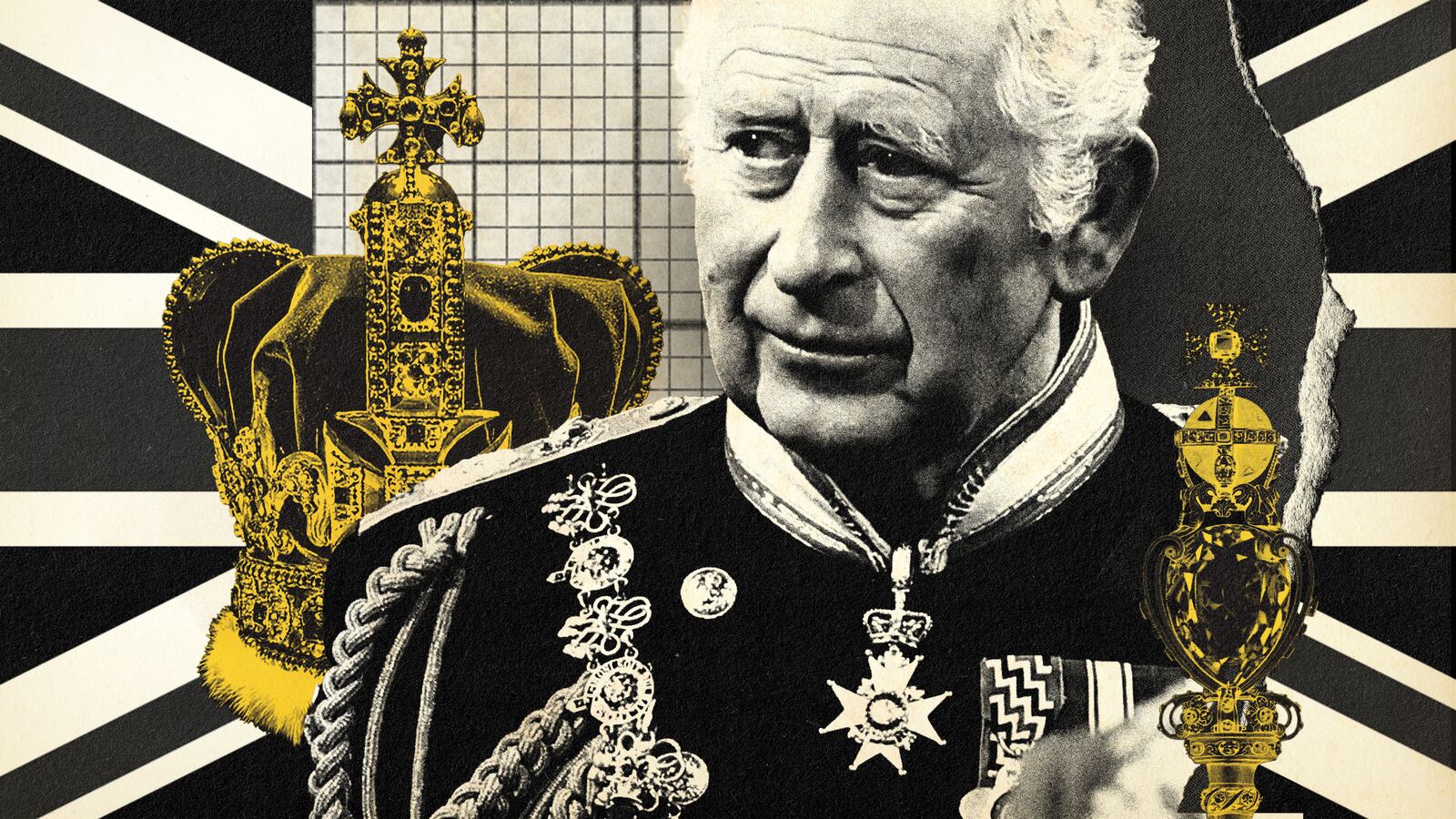On May 6, millions of televisions across the world will be tuned in to watch the coronation of King Charles III. This is the first British coronation since his mother, Queen Elizabeth II, took the throne in 1953. And much has changed.
When the queen was placed on the throne, the British empire was still largely intact and the population of the British Isles was so overwhelmingly white that there was no need to account for minorities on the census (ethnicity only became a surveyed question in 1991). Seventy years later, 18 percent of the population of England and Wales are from a racialized minority, and in the major cities Birmingham and Leicester it is now white people who are the minority.
Elizabeth’s coronation also predated race equality legislation, that she was exempt from when it came into force and Charles remains exempt from to this day. That revelation was just one of a series of scandals around racism that has beset the royal family.
The nation and the climate that King Charles’ coronation has to weather is completely different to the imperial showcase that welcomed his mother. As a result, the coronation promises some updates to embrace modern Britain.
So here is a what to look for on the day, from an antiracist perspective:

Queen Elizabeth II wearing her Cullinan V diamond brooch. The Cullinan V is an 18.8 carat heart-shaped diamond, cut from the The Cullinan Diamond.
Max Mumby/Indigo/Getty ImagesThe Cullinan Diamonds
Charles and Camilla were keen to avoid the controversy surrounding the Koh-i-Noor diamond. The gem was taken from India by the East India Company—which was also responsible for human rights abuses and inducing famines in the colony. There have been calls for the diamond to be returned, and a spokesman for the ruling party in India said the diamond “brings back painful memories of the colonial past.”
To avoid offense, the diamond will be replaced in the crown Camilla wears and placed safely away with the rest of the crown jewels. Instead, the Cullinan diamonds—which were part of Queen Elizabeth’s personal collection—will adorn the crown.
The Cullinan diamond is the largest-ever rough-cut gem found, and was cut into nine major gems, plus a hundred or so lesser brilliants. Collectively, the “Great Star of Africa” is estimated to be worth up to $2 billion. The diamond was found in Thomas Cullinan’s South African mine in 1905 and gifted it to King Edward VII in 1907. We can all thank the Palace for saving us from the painful memories of colonialism by showcasing a different piece of colonial loot.
The Diversity of the Procession
In Westminster Abbey, the king will be accompanied by a procession that includes politicians and other dignitaries.
Rishi Sunak is the U.K.’s first non-white prime minister and his presence will add color to the festivities. Expect to see a diverse crowd supporting the king for the day, not least from the representatives of “His Majesty’s realms” where he remains head of state—including former slave colonies in the Caribbean.
The Black writer and ex-television presenter Baroness Floella Benjamin has welcomed her role in the proceedings as sending “out a clear message that diversity and inclusion is being embraced.” She is honored to be carrying the Sovereign’s Sceptre on the day, which also happens to include some of the Cullinan diamonds.

Britain's Prince William and Catherine, Duchess of Cambridge accompanied by Baroness Floella Benjamin in London.
John Sibley/ReutersDefender of the Faiths
Typically the monarch pledges to be the “Defender of the Faith,” in his role as supreme governor of the Church of England. But as the nation has changed, it is thought that Charles wishes to declare himself the defender of “all the faiths.”
The procession will also include Jewish, Sunni and Shia Muslim, Sikh, Buddhist, Hindu, Jain, Bahá’í, and Zoroastrian faith leaders. It would be easy to dismiss this as empty symbolic gesture politics, but at least a positive PR move like this shows brand awareness. Although, it will be interesting to see how the king fulfils this commitment, whilst representing a government that is blamed for the rise in anti-Muslim hate crimes.
British Empire Medal Awardees
As a recognition of their achievements, British Empire awardees are invited to the congregation. The awards are given out for some very worthwhile community service, and stand out for just how direct the embrace of the empire is.
The entire honors system is based on empire—with the B.E in awards like KBE and OBE standing for “British Empire.” The abbreviation usually hides the fact, so perhaps it is good to celebrate the brazenness of calling the award what it really is: a celebration of Britain’s colonial past.
The Anointing Screen
Prior to the king being crowned, he will be anointed in front of a screen that has been digitally and manually embroidered—and specially designed to represent the king’s “deep affection” for the 56 nations of the Commonwealth.
The Commonwealth remains, for the most part, the former British empire, still headed by the British monarch despite the role supposedly being non-hereditary. The screen is an homage to the king, representing approximately 20 percent of the world’s population—in all its diversity.
Coronation Music
They say that imitation is the sincerest form of flattery, so perhaps the king is making an antiracist statement by choosing the same gospel choir, Ascension, that performed at Harry and Meghan’s wedding.
There have also been a series of special commissions for the music to be performed on the day. You can expect the classical fare necessary for the pomp and circumstance. But Iain Farrington’s organ piece, Voices of the World”, is set to capture the modern feel of the event. It’s been described as combining “traditional tunes from across the family of nations in a joyful, jazzy, and dance-like character.” The white British composer hopes “it will get people’s toes tapping!”
Pledge of Allegiance
For the first time, the public will be invited to take part in the coronation. During the proceedings, the Archbishop of Canterbury will invite the watching public to “swear that I will pay true allegiance to Your Majesty, and to your heirs and successors according to law. So help me God.”
I for one am honored that this innovation allows me to swear allegiance to hereditary (white) privilege.
The Gold State Coach
The king will leave Westminster Abbey in the Gold State Coach, which has been used in every coronation since 1831. The coach was made in 1762 and is covered in so much gold leaf that it weighs four tons. It cost more than $4 million to make (in current dollars) and is too ostentatious even for the old MTV show, Pimp My Ride.
It is also the perfect symbol of the wealth of the monarchy, made possible only in a time when Europe dominated the “Gold Coast” on the West of Africa, which went on to become a British colony, and eventually the nation state of modern-day Ghana.

The Gold State Coach at the Royal Mews, Buckingham Palace.
Dominic Lipinski/Getty ImagesChange the Channel
On reflection, the only genuine way to enjoy an antiracist coronation is to tune into anything else.
When Charles’ mother took the throne there were two television channels in the U.K. and four in the U.S. Today you have innumerably more options, including streaming the Harry & Meghan documentary.
So look away, go outside, read a book, or take a nap. The lesson to this guide is that there is no such thing as an antiracist coronation.








